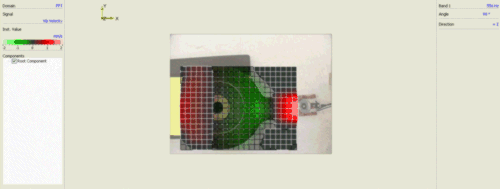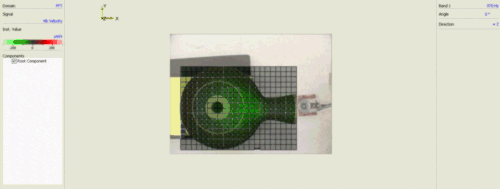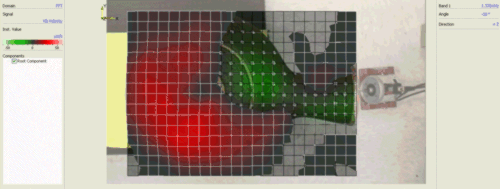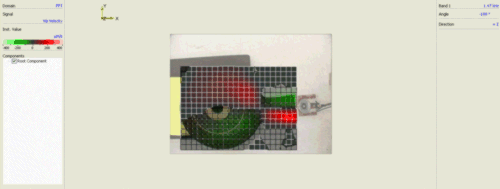We want to understand the various vibration modes of the udu instrument so that we can better understand the sound that is produced when a musician strikes the udu at any given location on the instrument. We recorded the sound emitted by tapping on the udu in an anechoic chamber and obtained the result below. The curve marked "Cowbell" was obtained when we struck what we call the cowbell end (just past the neck of the instrument). T.H. stands for top hole and this corresponds to what is called the "side hole" on traditional water pots. N. stands for north, thus implying that we struck just above the top hole, while W. stands for west which is the side of the top hole towards the cowbell. (It is helpful to think of north and west in terms of the usual playing configuration if the right hand plays the cowbell hole and the left hand plays the top hole).
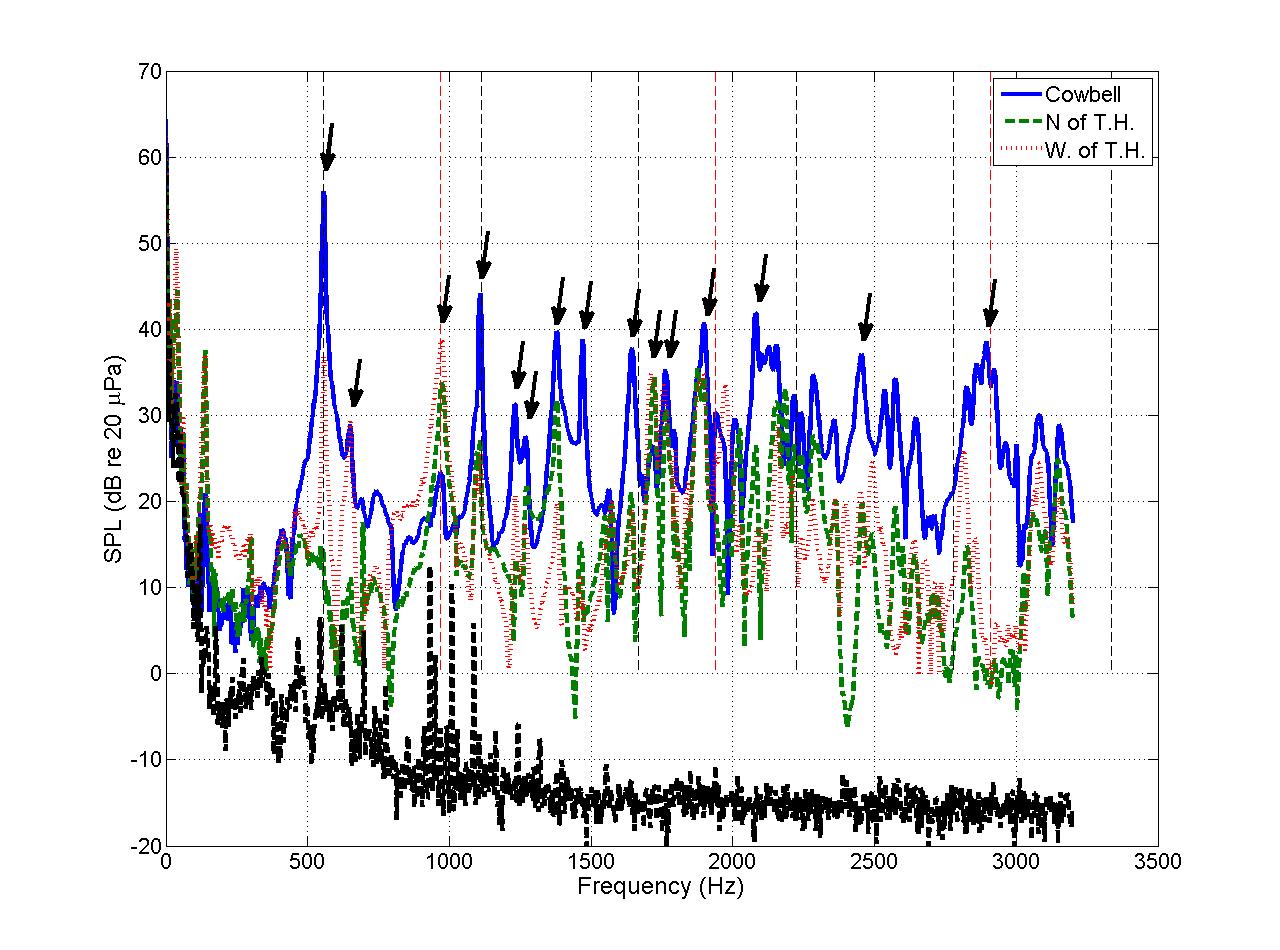
After observing these various sound frequencies emitted we desired to see how each the instrument vibrates at each frequency. We therefore did scans of the vibration at the frequencies indicated by the arrows in the figure above. Below we provide the results of some of these scans. The best way to learn from these vibration patterns is to consider that if you strike the udu at a place where a mode is vibrating at large amplitudes then you'll get a lot of sound at that frequency. If you strike it at a place where a particular mode doesn't vibrate (called nodal lines) then you won't hear that frequency in the sound radiated.
